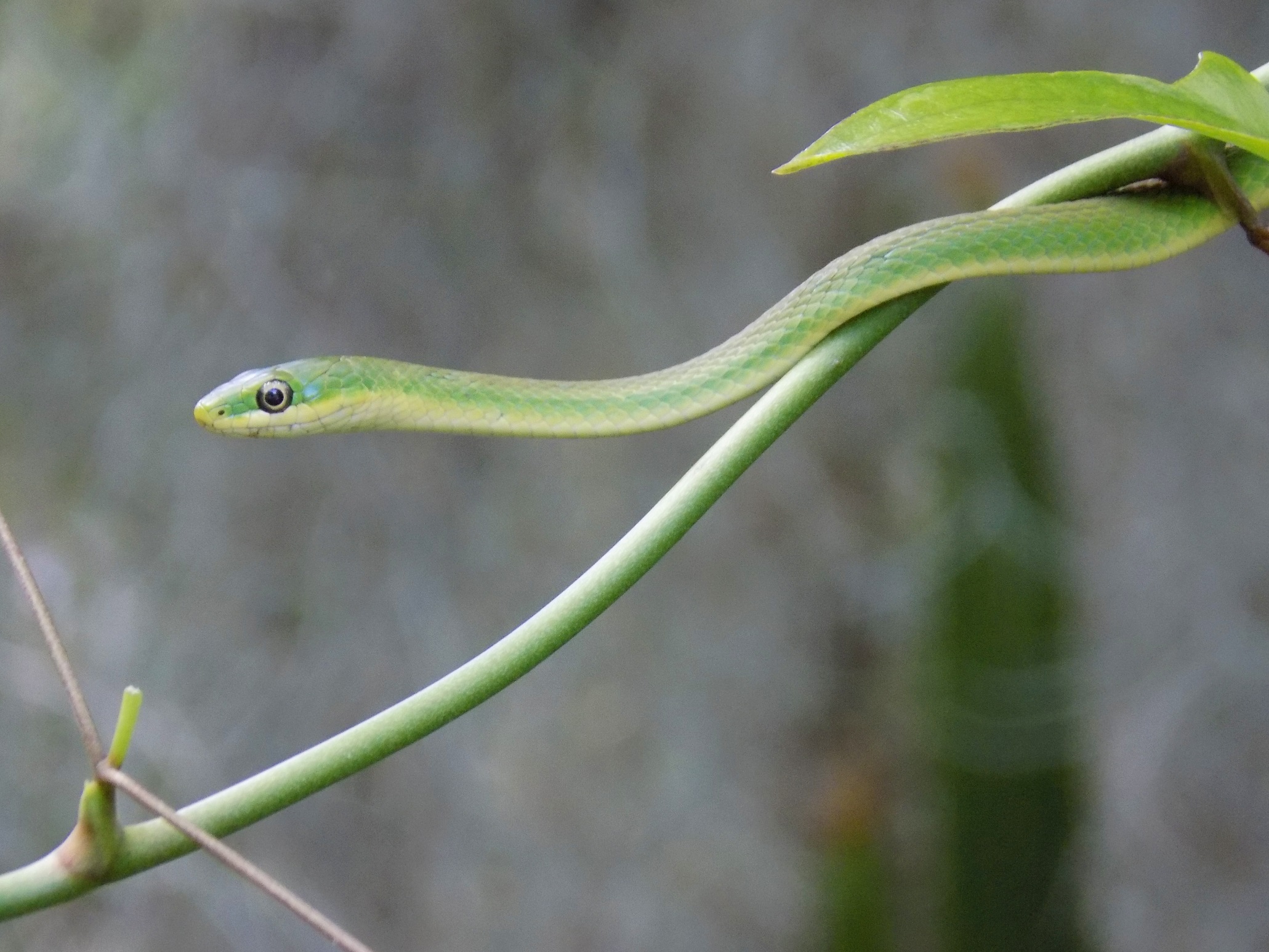
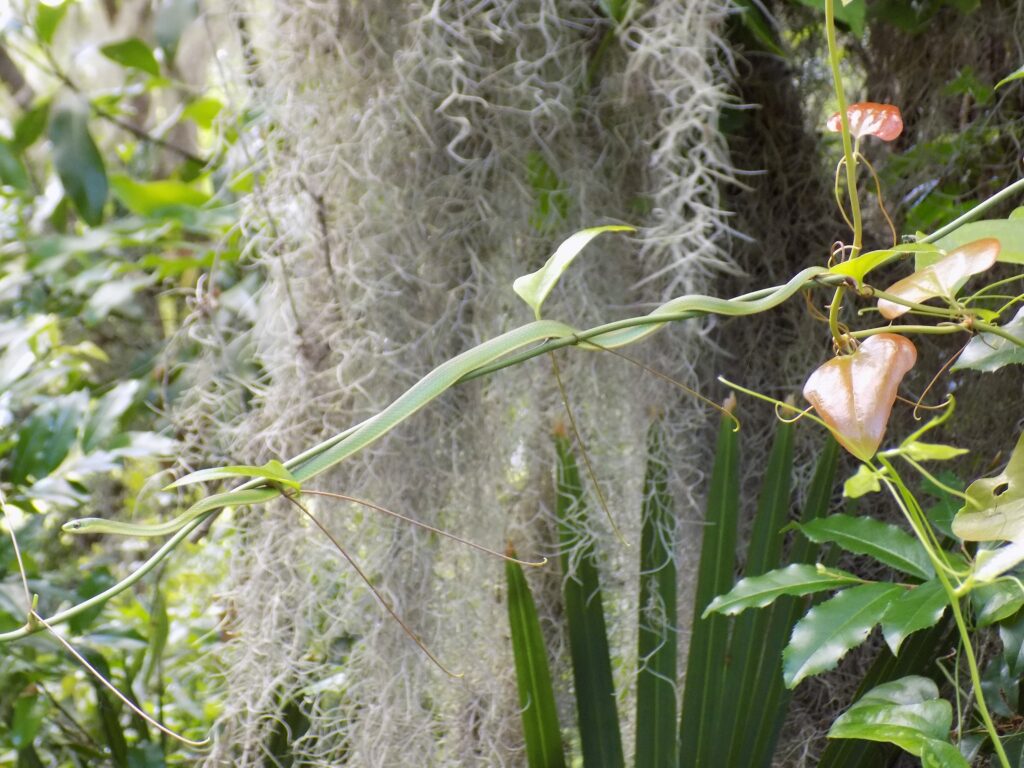
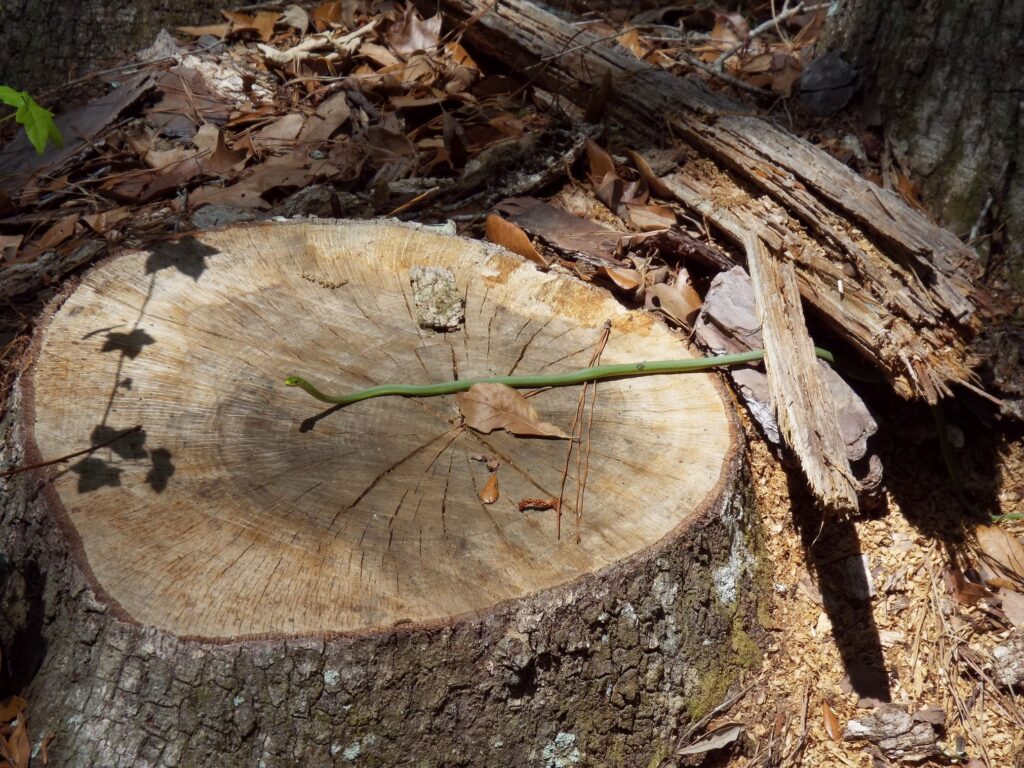
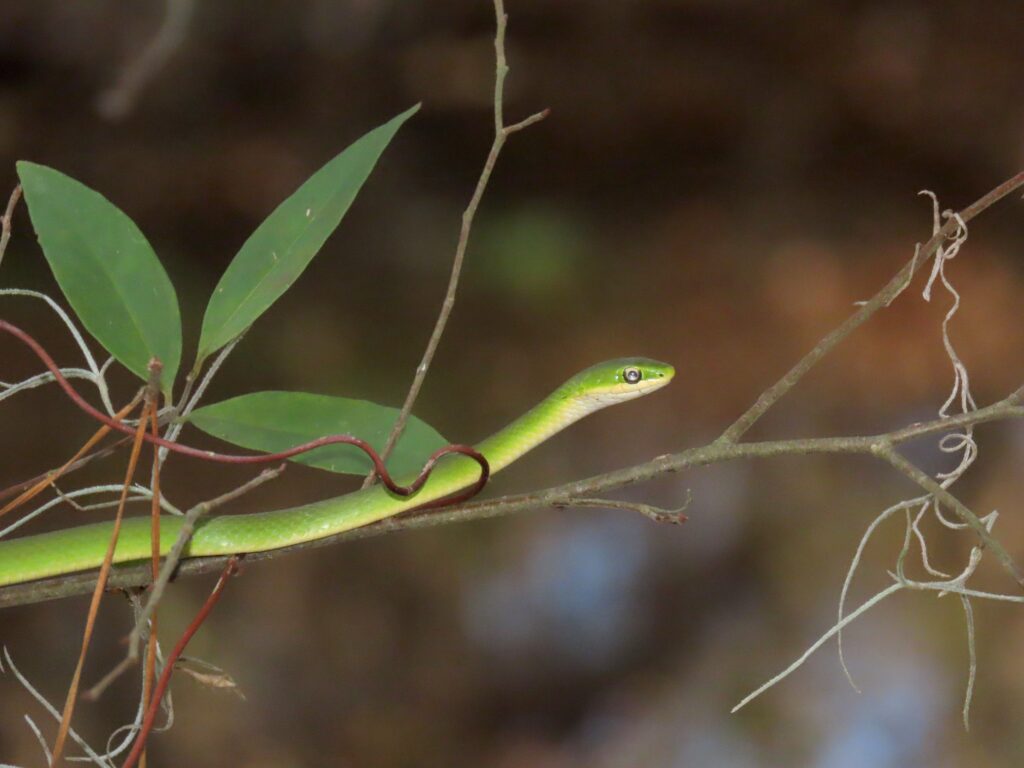
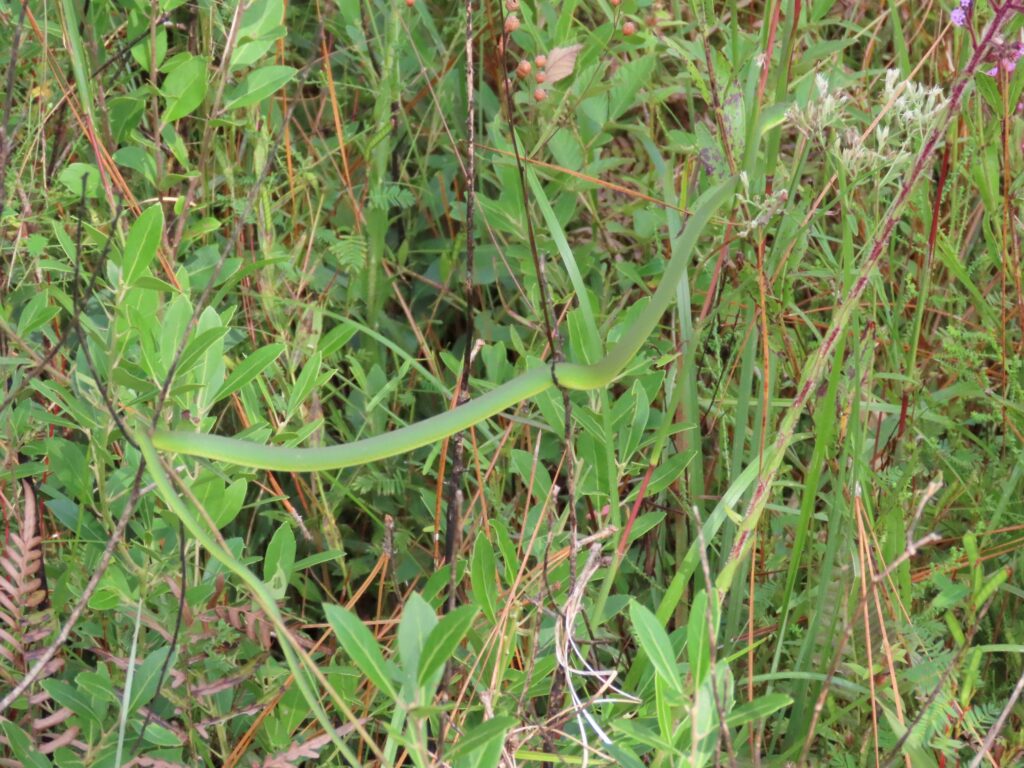
This week for Flora and Fauna Friday we have lean, mean, green, tree climbing machine, the Rough Green Snake (Opheodrys aestivus).
The Rough Green Snake is found throughout the Southern United States and all of South Carolina. It’s an unmistakable snake here, being thin as a finger for two-feet or more in length and a uniform emerald-green above with straw-yellow below. In the Appalachians Mountains, the Smooth Green Snake exists instead, a species which looks nearly identical except, it’s smooth! The Rough Green Snake is conversely rough, having keeled scales with vertical ridges that run along their length.
The Rough Green Snake is an arboreal snake, living almost its entire life in the tree canopies of hardwood forests and the brushy thickets along rivers and forest margins. Here they feed on invertebrates including cicadas, katydids, and caterpillars, as well as anoles and tree-frogs. Strangely, they aren’t known to raid bird nests for eggs, despite having the climbing chops to reach any woodland bird’s nest. Given their slender build, this live-and-let-live relationship between Green Snakes and birds may be an adaptation by the snakes to avoid unceasing harassment from sharp-eyed birds with equally sharp bills. Rough Green Snakes are not venomous nor do they constrict, they simply grab and swallow their prey whole. Despite being very common, Green Snakes are hard to spot, on account of them being green and living at the tops of trees. Yet, they frequently visit bushes closer to eye level and slither down to the ground to cross roads, lay their eggs, and move from tree to tree. Rough Green Snakes are prey for most any predator that finds them, particularly birds. Notably, they are a favorite food of Mississippi and Swallow-tailed Kites and it’s not an uncommon site to see a Kite circling overhead with a limp lime-green line trailing behind it, snacking on a snake-flavored Slim-Jim one bite at a time. When confronted, Rough Green Snakes freeze in place, relying on their camouflage to hide them in plain sight. They’re very adept climbers but not very fast in a straight line race for cover.